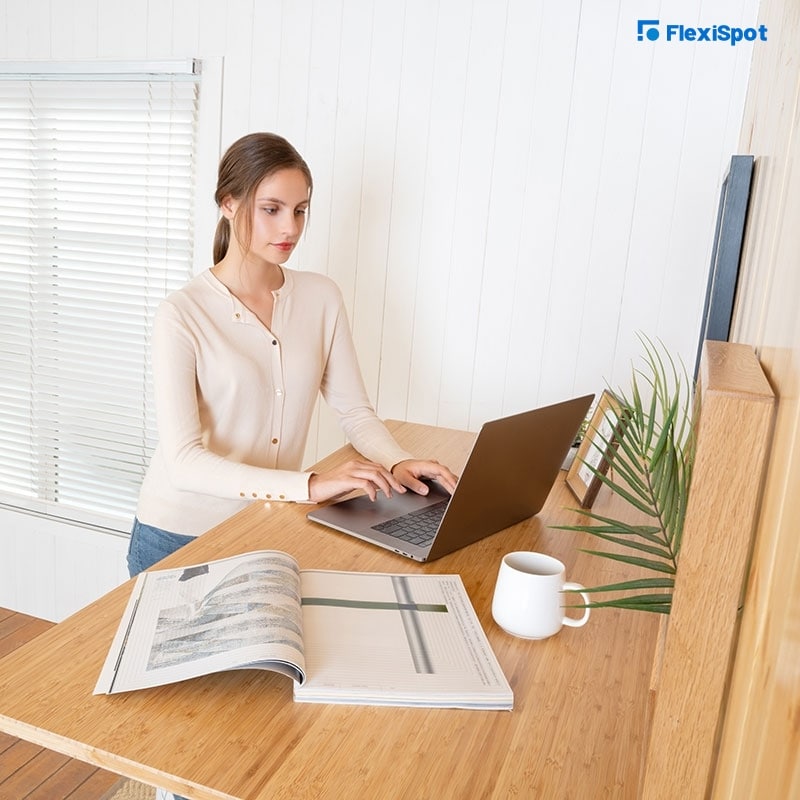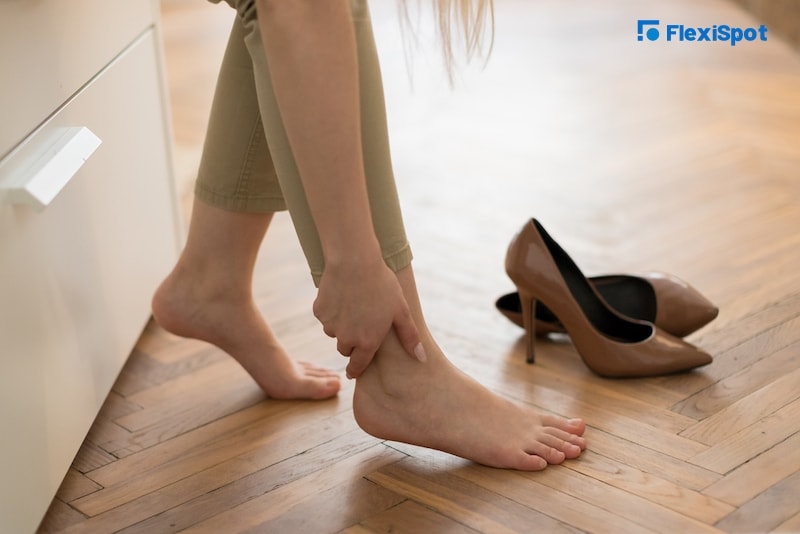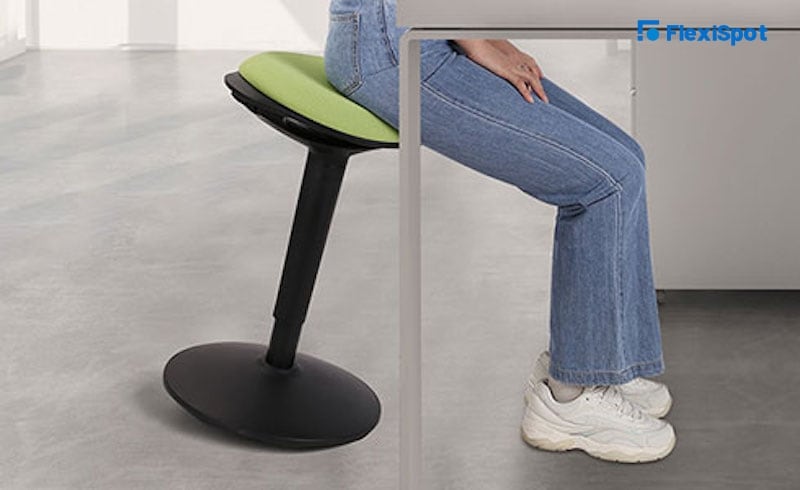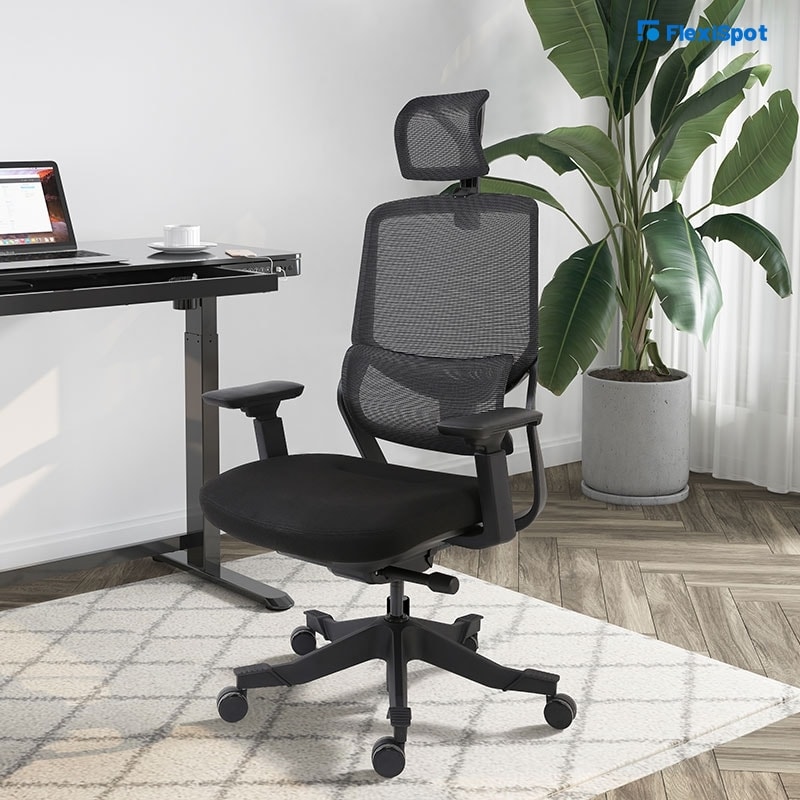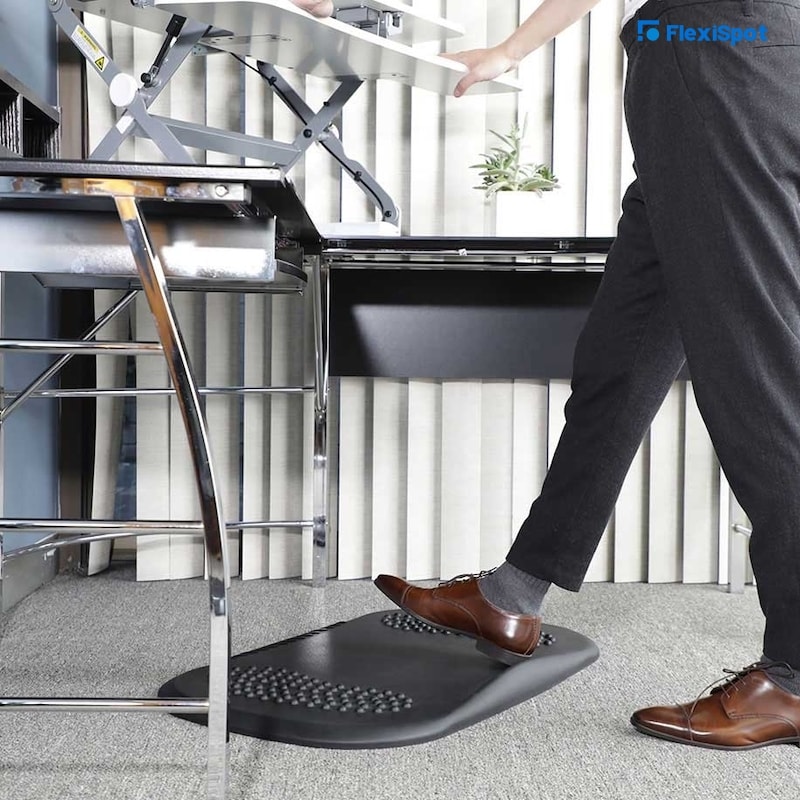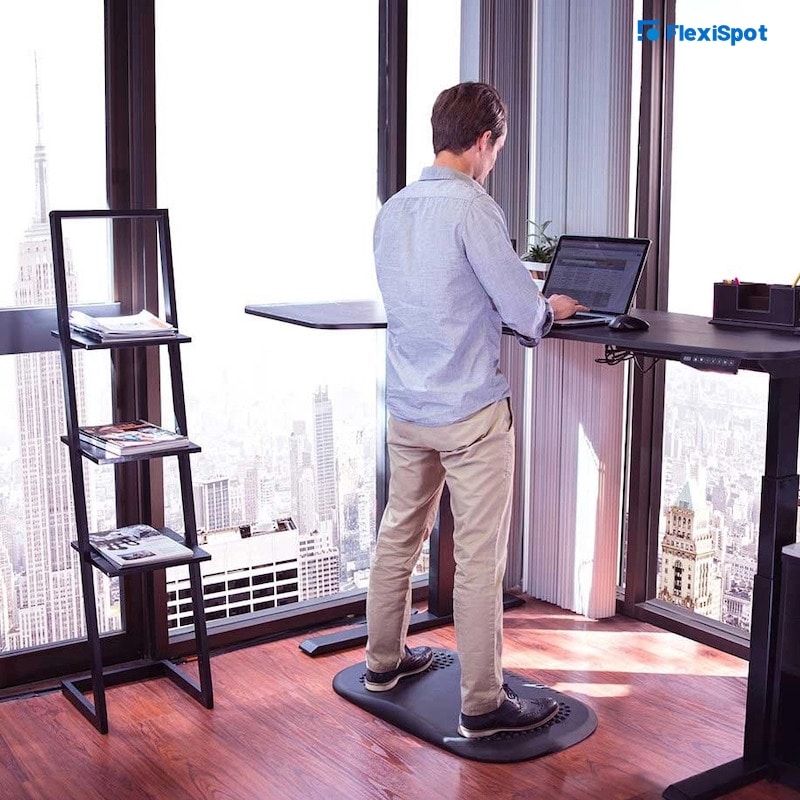Various studies by reputable medical institutions link a sedentary office culture to chronic illnesses. Some go as far as to equate the danger of smoking. However, standing desks offer a healthy alternative to working all day while sitting at a desk.
Standing helps improve blood circulation, calorie expenditure, and blood circulation. You can also stretch around or embed workout equipment to your standing desk. Best of all is that you get to this in minor increments that don't leave you tapped out.
But, it's hard to get these benefits if you misuse your standing desk. Since you're here, it's safe to assume you don't wear stilettos or hardened dress shoes while at your desk.
Fortunately, we've prepared this piece to guide you through all you need to know about standing desks. By the end of this article, we're confident you'll be able to settle on the best shoes and standing desk practices.
The Challenges of Using Standing Desks
Too much of something can be poisonous. And research points to certain health risks that come with using standing desks for extended periods.
Let’s put this into perspective.
Staying on your feet for too long will tire you out eventually. And any injuries or health issues that cause mobility difficulties are aggravated if you can stand for long.
Here's a shortlist of challenges associated with using standing desks:
Standing all day can compress the spinal disks on your lower back. This leads to lower back pain. The best way to avoid this is to take frequent breaks on an ergonomic office chair with optimal lumbar support.
Security guards, retail workers, and other professionals that stand for hours face an elevated risk of developing cardiovascular and heart-related ailments. The older you are, the more likely you will suffer a stroke or heart attack while at work.
Standing incorrectly for too long can worsen postural problems like stooping or walking with a hunched back.
The longer you spend on your feet, the more blood pools around your feet. This can lead to numbness, swollen leg muscles, and varicose veins in worse-case scenarios.
Standing burns calories, but it could translate into lower energy levels and lower engagement in your tasks. This is especially true if you have health problems that affect your appetite.
The calories you burn while standing are not a substitute for proper dieting and exercise. So, it's not the best way to deal with obesity and other weight issues.
However, it all comes down to how you use your standing desk. Taking frequent breaks and proper foot support does help. That’s why it’s common to see people using standing desks while barefoot.
This begs the following question:
Is it Advisable to Work Barefoot at a Standing Desk?
It’s not much of a debate, really, but it is an important question. Footwear is necessary, not just at your standing desk but in a shared space such as your office. Here are a few reasons why.
Your Feet Have No Protection from Falling Objects
Your shoes offer a level of protection from falling objects that can hurt your feet. This factor depends on where you work. That's why most factory workers wear steel-toed footwear. But even office workers face an ever-present, albeit lower, risk of the same.
For instance, an IT technician can drop a power supply unit or CPU casing on their bare feet. Such injuries would be commonplace if most employers didn't have a strict footwear policy in their office spaces.
This is without even going into the dangers of tinier office supplies like thumbtacks, staples, paper clips, etc.
It’s Unsanitary
You may not think about it, but a pair of shoes and socks insulate you from a minefield of bacteria and fungus on your office floor. The risk increases when everyone else in the office also adopts such a lax attitude towards footwear.
You risk exposure to:
Clostridium difficile (C. diff): These bacteria cause colon inflammation with symptoms like foul-smelling diarrhea. It can cause rashes and other skin irritations that can even affect your eyes and the lining of your lungs.
Staphylococcus aureus (staph): This bacteria is usual in the health care and foodservice
E. coli: If you work in a rural-adjacent area, then most of your floor may have traces of this bacteria from exposure to livestock and wildlife fecal matter. E. coli can cause urinary tract and intestinal infections that can be painful and costly to treat.
You also run the risk of exposure to harmful chemicals used in detergents and a long list of things that we can’t begin to cover in this article.
So, you can already see the importance of footwear in any space outside your home.
Leaves You Prone to Muscle Fatigue
The Achilles tendon and calf muscles of people who stand for 11 or more hours per day have been found to decline in efficiency when they stand barefoot, states a study by Dr. Michael Ryan from the University of Texas in Brownsville. These muscle groups have to work harder to reduce the pain caused by fatigue and the sensation of tiredness.
It Promotes a Lax Attitude towards Corporate Culture
When everyone stands or walks barefoot around the office, it paints a negative picture. This gives the entire company an air of unprofessionalism, which can spread like wildfire if visitors and clients talk about it outside your office.
What Are the Solutions to the Negative Effects of Prolonged Standing?
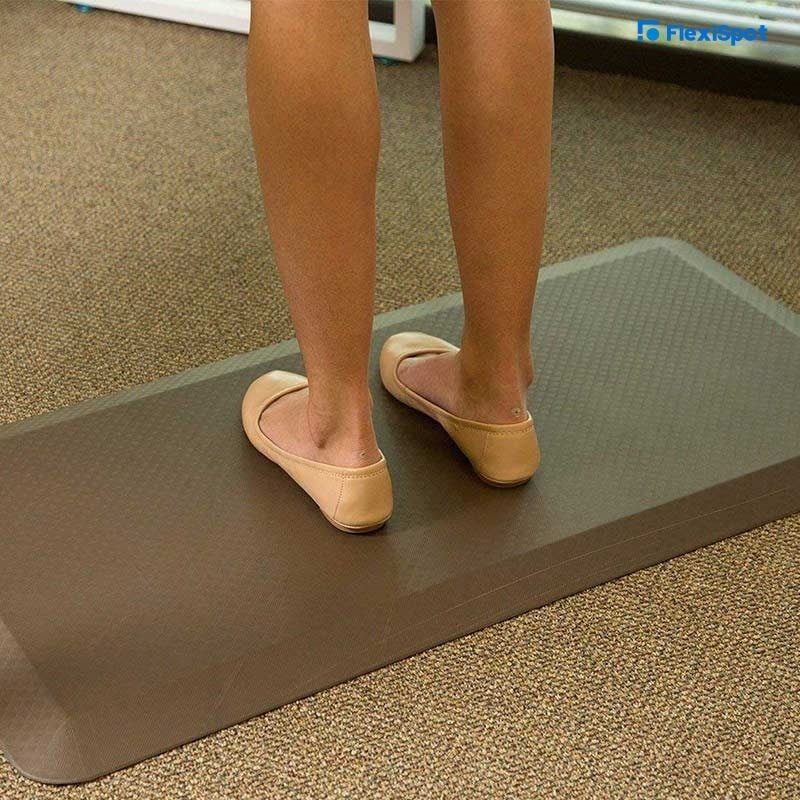 Anti-Fatigue Mats
Anti-Fatigue Mats
Anti-fatigue mats often feature a cushioning rubber material that enhances your comfort and support while using a standing desk. This means you can stand for longer without experiencing leg fatigue.
Some anti-fatigue mats feature massage points that soothe the pressure point on the soles of your feet. This feature also promotes subtle body movement and muscle stimulation that improves blood circulation.
Best of all, you can get all these benefits whether you’re barefoot or in shoes.
Wobble Stools
Wobble stools offer an excellent way to promote active (dynamic) sitting. They feature a soft stool cushion and a support pole that sits on an unstable platform. These features mean you have to support some of your weight with your legs.
It also results in a rocking motion that forces you to work your leg muscles and improve your blood circulation in the process. Aside from escaping your sedentary life, it also helps you stay focused and presently engaged as you work.
Height Adjustable Ergonomic Office Chairs
It takes time to break a habit that gives you comfort, like working on a sitting desk. Even having a wobble stool or anti-fatigue mat doesn't help some people get used to standing desks. If you are in such a category, then it's important to pace yourself.
The good thing is the best height-adjustable desks feature simple sit-stand controls. They also feature friendly sit-stand reminders that you can program to help you stand or sit at intervals. Aside from that, you can set them to various heights.
Now, all you need is a height-adjustable ergonomic office chair to give you a break from all that standing. With that in place, you can comfortably recover from muscle aches and overall fatigue when standing gets to be too much.
Things to Consider When Searching for the Best Shoes for a Standing Desk?
Everyone has a unique foot shape and standing posture. That's why it's hard to point to the perfect pair of shoes for standing desks. So, the best footwear is whatever you feel comfortable wearing and standing or walking around all day.
Here are a few features to consider when choosing the right pair of shoes:
Traction
Sneakers come as the most preferred shoes for standing desks. It’s worth noting that sneakers get their name from the enhanced traction and arch support they promote. That’s why their manufacturers design and build them with comfort and an active lifestyle in mind. You can also opt for shoes that have similar features if you’re not a fan of sneakers.
Strong Shock-Absorbent Soles
Strong and shock-absorbing soles are another feature worth considering. Shoes with such soles absorb most of the pressure from your lower back, hips, and legs. This provision goes a long way into reducing muscle cramps and joint pains stemming from standing with infrequent movement.
Arch Support
You experience most of the pain and discomfort when moving from a sitting to a standing position. This condition is primarily because of all the blood that suddenly pools to your ankles. Arch supports are inbuilt features that cradle your ankles to reduce or eliminate pain. However, they are more common in sneakers, tennis shoes, hiking boots, cycling shoes, and other activities.
The Right Size
Getting a shoe in the right size is the best place to start when you want some support and comfort. The same is true when looking for a pair for use at a standing desk. It’s hard to be comfortable on your feet with shoes that are too tight or loose.
Tips to Help You Transcend into a Sit-Stand Desk Set up
When getting a standing desk for the first time, most people assume they'll be on their feet all day. However, this is as impractical as it is unhealthy.
That's why some of the premier standing desk models like the: Kana Pro Bamboo, Seiffen, and Comhar series come with features that ease your transition from a sitting to a standing position and vice-versa.
When you start using a standing desk, please take it in small steps, maybe an initial 10 to 30 minutes. From there, you can increase your standing time as your body gets the proper conditioning.
Please resist the temptation to stand for 8 hours even when you get used to it. Having the right pair of shoes can help with this transition.
Here’s a list of tips that’ll ensure you get accustomed to a sit-stand work rotation:
1. Stay hydrated and have healthy snacks
2. Have frequent breaks where you sit to recoup your composure
3. Walk or perform some stretches to maintain proper blood flow
4. Practice proper standing posture
5. Test out your standing desk shoes before committing to them
Conclusion
Wearing a pair of shoes protects you from billions of bacteria and occupational hazards that linger around every corner. Footwear also comes with enhanced arch support, traction, and shock absorption that protect your feet even when you're merely standing around.
So, are shoes necessary when using a standing desk? After reading all this then the answer is a resounding yes! We can't close in on the ideal shoes for standing desks. But, most people prefer having a pair of sneakers or tennis shoes handy in their offices.
So, prioritize your comfort and the ideal fit when looking for the perfect pair. Eventually, your body will adjust to this active office lifestyle.

